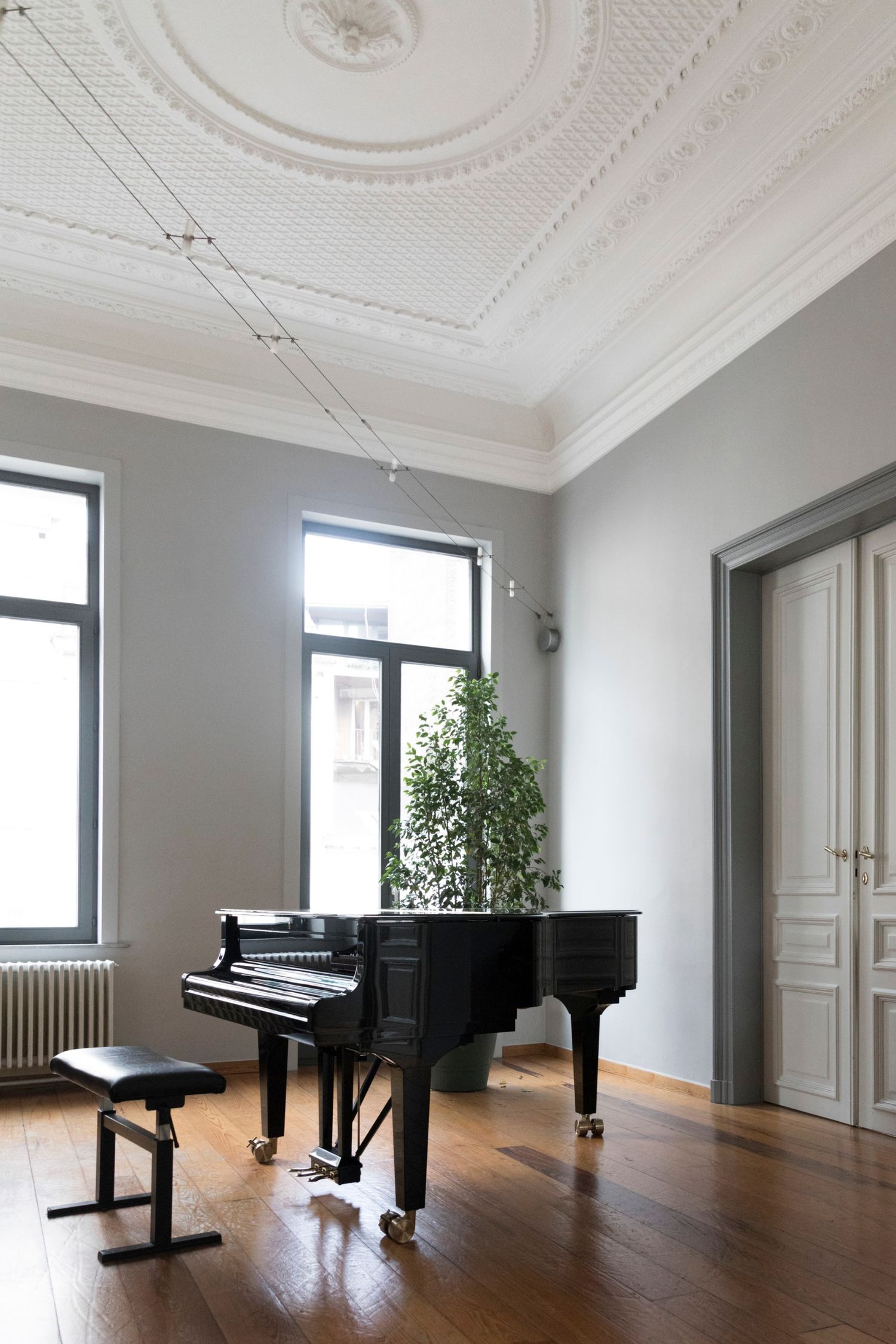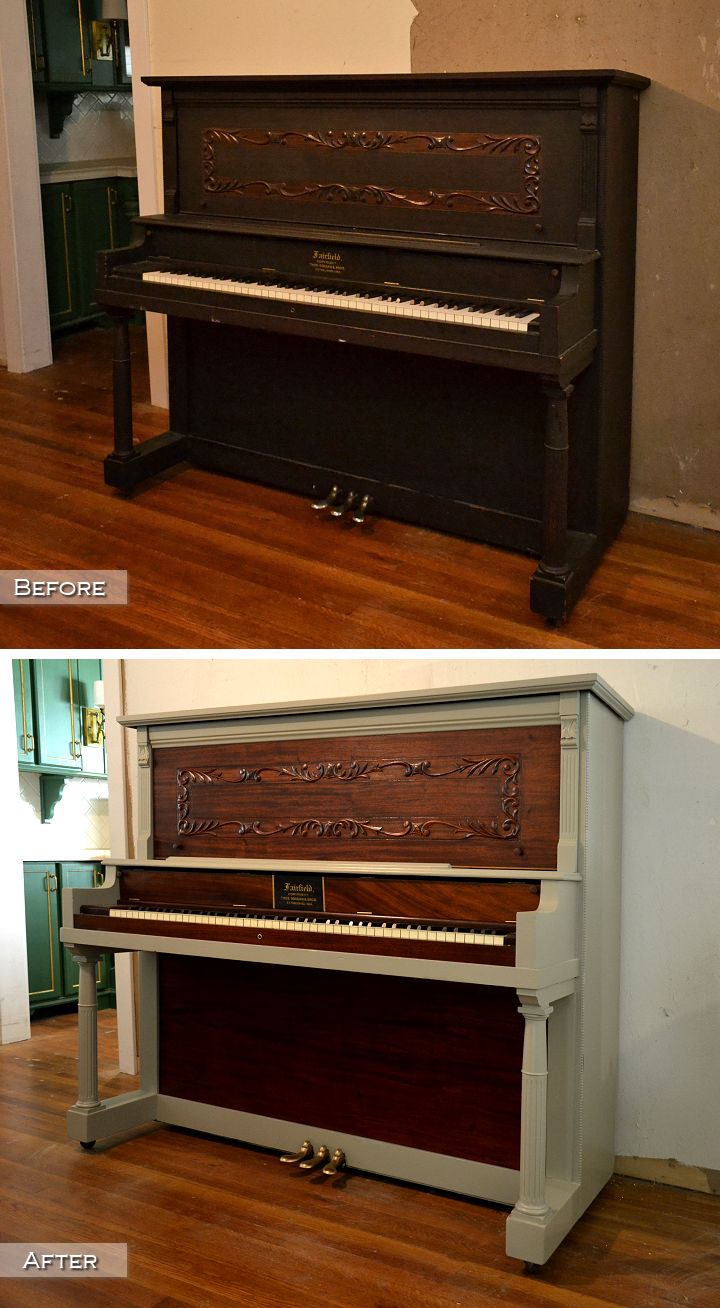Yes, you can change the color of a piano. The process typically involves refinishing or repainting.
Revamping a piano to suit your aesthetic preferences can breathe new life into an old instrument. Whether you own a grand piano that has lost its luster or an upright piano that doesn’t blend with your decor, altering its color is possible.
This task can range from simple DIY projects using piano-safe paint, to professional jobs that may include stripping and refinishing the wood. The process not only gives your piano a fresh appearance but can also protect its surface from wear and tear. Before embarking on this transformation, it’s important to understand the effort, cost, and potential impact on the instrument’s value. Therefore, it’s crucial to consult with professionals, especially if you have an antique or high-value piano.
The Original Hue: Piano Color Basics
Gazing at the grandeur of a piano, it’s the blend of melodious art and visual appeal that captures one’s heart. Yet, have you ever pondered the potential to personalize your piano’s palette? Before exploring this creative quest, understanding the traditional colors and materials is fundamental. Classic pianos don a standard look, radiating elegance through their carefully selected finishes. From glossy blacks to warm woods, the original shades are a testament to tradition and craft.
Traditional Piano Colors And Materials
Pianos have long been adorned with a limited, yet classic color range. Black, brown, and white dominate the scene, reflecting a refined taste. These shades are chosen to enhance the instrument’s allure while complying with a universally accepted aesthetic. The materials in play, primarily wood and metal, are coated with lacquers that not only beautify but also protect the instrument.
- Black: Often associated with formality and sophistication, black pianos are prevalent in concert halls and music studios.
- Wood Finishes: Brown hues, from mahogany to walnut, exude warmth and blend seamlessly with diverse interior designs.
- White: A white piano stands as a statement piece, invoking purity and modernity.
Factory Finishes Vs. Custom Colors
Every piano leaves the factory wearing its final color coat. Manufacturers usually apply these factory finishes with precision and durability in mind. They are made to last, enduring the test of time and use. However, the customization trend has begun to transform the industry. Custom colors allow individuality to shine through, as owners inject personality into their instruments.
| Finish Type | Pros | Cons |
|---|---|---|
| Factory Finish |
|
|
| Custom Color |
|
|
Reasons For Recoloring Your Piano
The choice to recolor a piano goes beyond mere whimsy. It involves a thoughtful process that aligns with the owner’s vision and the piano’s surroundings. Consider the following reasons for taking on such a creative endeavor.
Personal Aesthetic Preferences
Music enthusiasts often form a deep connection with their instruments. The desire to have a piano reflect one’s personal style is a strong incentive for recoloring. A piano’s color may embody an owner’s personality, creating a sense of pride and satisfaction.
Matching Home Decor
A piano is not only a musical instrument but also a significant piece of furniture within a home. Ensuring that its color harmonizes with the room’s decor enhances the overall ambiance. A mismatched piano could disrupt the visual flow of a space.
Restoring Antique Pianos
Antique pianos carry historical value and their restoration often includes a return to original color. Professional recoloring can rejuvenate an old piano, preserving its legacy while giving it a refreshed look.
Color Transformation Possibilities
Reviving an old piano with a splash of color or refreshing a faded finish can be a rewarding experience. Bringing your personality into your musical instrument does not just add aesthetic appeal but also breathes new life into it. Let’s explore the possibilities of transforming your piano with color!
Painting Versus Refinishing
Changing the color of a piano involves two main methods: painting and refinishing. Painting provides a quick and often less costly transformation. It allows for vibrant and various colors. Refinishing, though more labor-intensive and expensive, restores the piano to its original look. Or it can alter it with a new stain and finish.
Consider the value of the instrument and your long-term intentions before choosing.
Types Of Paint And Finishes
Different paints and finishes produce unique effects and offer varied levels of durability. Here’s a quick rundown:
- Acrylic Paints – Quick-drying, water-soluble, and easy to handle.
- Oil-Based Paints – More durable but requires longer drying times.
- Spray Lacquer – Creates a high-gloss finish and is excellent for small projects.
- Polyurethane – Provides a hard, durable finish, protecting the piano from wear and tear.
Each paint type and finish has its application technique. Make sure to research or consult with a professional for the best results.
Selecting The Right Color
Choosing the right color for your piano hinges on your style and room decor. Bold colors can turn the piano into a statement piece. Timeless neutrals blend seamlessly with any room.
Consider light-based colors for smaller spaces. They make the piano appear less bulky. Use a color wheel to find complementary colors for a harmonious appearance with other room elements.
Test paint samples before committing to ensure satisfaction with your choice under different lighting conditions.

Credit: wcmovingandstorage.com
Preparation For The Change
Are you dreaming of a piano that perfectly matches your style? Before diving into the transformation, proper preparation is crucial. The color change process involves detailed steps to ensure an impeccable finish. Let’s explore how to get your piano ready for its fresh new look!
Disassembling Components
First things first, safely disassemble your piano. This step is vital to protect the intricate parts that shouldn’t be painted. To do this:
- Remove the piano’s hardware such as hinges, pedals, and the music stand.
- Keep screws and small parts in labeled bags.
- For grand pianos, detach the lid and prop stick.
- Upright pianos require removal of the front panel.
Taking photos during disassembly will help during reassembly.
Surface Preparation For Painting
To ensure the new paint adheres well, preparing the surface is key. Follow these steps:
- Clean the surface to remove dust and grime.
- Sand the piano with fine-grit sandpaper to create a smooth base.
- Wipe down with a damp cloth to clear any sanding residue.
- Apply a primer that suits the type of paint you will use.
Allow the primer to dry completely before applying paint. This stage sets the foundation for a stunning and durable color change.
The Process Of Changing Piano Color
The process of changing the color of a piano can breathe new life into an old instrument. Imagine transforming a weary, faded piano into a vibrant statement piece. Whether a glossy black grand piano or a pastel upright, the color change makes a piano feel brand new. Let’s dive into the services and techniques that can help achieve this.
Professional Piano Painting Services
When choosing professional piano painting services, you ensure a high-quality finish. Professionals have the expertise and tools for a flawless job. Let’s look at what this service includes:
- Assessment: Experts examine the piano’s condition.
- Color Consultation: They help select the perfect shade.
- Preparation: Technicians will disassemble and prepare the piano.
- Painting: Application of primer, paint, and finish.
- Reassembly: Putting your piano back together.
Diy Painting Steps And Techniques
For those who prefer a hands-on approach, DIY painting is an option. Follow these steps for a successful piano color transformation:
- Choose the Right Paint: Enamel paint works best for pianos.
- Clean Thoroughly: Remove all dust and grime.
- Sand the Surface: Sanding helps paint adhere better.
- Apply Primer: Primer is crucial for an even base.
- Paint Evenly: Use a sprayer or brush for a smooth coat.
- Let it Dry: Allow the paint to dry completely between coats.
- Seal the Paint: A sealer preserves the new color.
Whether going for a professional service or embracing the DIY approach, the results are a visually stunning piano. Remember, precision and patience are key!

Credit: www.addicted2decorating.com
Maintenance And Care Of The Newly Colored Piano
Maintenance and Care of the Newly Colored Piano ensures your vibrant instrument looks great for years. A fresh color adds personality and style. Yet, it requires proper upkeep. Let’s safeguard the visual appeal of your piano’s new finish with effective maintenance strategies.
Preserving The Finish
The key to maintaining a newly colored piano is protecting its finish. The finish shields the wood and the new color from damage. To preserve the finish:
- Keep the piano out of direct sunlight.
- Avoid placing it near heating or cooling vents.
- Use coasters under vases or drinks to prevent moisture damage.
- Always use products designed for pianos.
Cleaning And Upkeep Tips
Regular cleaning is vital for your colored piano. Follow these simple tips for a spotless appearance:
- Dust the piano weekly with a soft cloth.
- For deeper cleans, use a damp cloth followed by a dry one.
- Pick a mild cleaner specifically for piano surfaces.
- Avoid harsh chemicals that can strip the color.
- Promptly clean spills to prevent staining.
| Do’s | Don’ts |
|---|---|
| Use soft, lint-free cloths for cleaning. | Don’t let dust accumulate. |
| Polish with proper wax if necessary. | Avoid spraying anything directly on the piano. |
Care for your newly colored piano enriches its longevity and beauty. Embrace a careful cleaning regimen, and enjoy the lustrous finish year after year.
Common Concerns And Considerations
When considering a new look for your piano, there are a few important factors to take into account. Each decision you make can have implications beyond just aesthetics. Below, we’ll delve into the potential impacts changing your piano’s color might have on its value, warranty, and even sound quality.
Impact On Resale Value
Think twice before you change your piano’s hue. A bold color can make your instrument stand out, but it could also affect its future value. The original finish often holds more value to potential buyers who appreciate traditional styles or seek particular piano brands with their classic look. Consider this:
- Classic finishes like black or brown often retain their value better.
- Unique colors might attract a smaller market, affecting resale prospects.
- Quality of refinish is crucial, as poor work can lower the piano’s worth.
Warranty Implications
Is your piano under warranty? Altering its color may void it. Here are the main points to remember:
- Always check your warranty terms before making changes.
- Restoration or customization work is often best left to professionals.
- Unauthorized changes can lead to warranty cancellations.
Effect On Sound Quality
A piano isn’t just furniture; it’s a musical instrument. Changing its color might affect more than its looks. The type of paint and application method can influence the sound:
- Heavy paints or lacquers may dampen the natural resonance.
- Choosing a specialist in piano refinishing ensures the materials used won’t harm the sound.
- The piano’s interior should remain untouched to preserve its acoustics.

Credit: www.reddit.com
Does Tuning the Piano Affect Its Color?
No, tuning the piano correctly does not affect its color. The color of a piano is determined by the materials used in its construction, not by the tuning process. Tuning ensures that the piano produces the correct pitches and tones, but it has no impact on the instrument’s color.
Can I Change the Color of My Piano While It’s Being Repaired?
Changing the color of your piano while it’s being repaired can be tricky. It often requires specific techniques and materials to ensure a seamless finish. If you’re considering a color change during repairs, consult your technician first or find digital piano repair services that can accommodate your desires.
Frequently Asked Questions On Can You Change The Color Of A Piano
Is It Ok To Paint A Piano?
Yes, you can paint a piano, but choose the right paint, prep the surface properly, and apply the paint carefully to avoid damaging the instrument.
What Kind Of Paint Do You Use On A Piano?
Use high-gloss or semi-gloss enamel paint for pianos. It adheres well and withstands frequent cleaning, providing a durable, elegant finish.
Can You Spray Paint Piano?
Yes, you can spray paint a piano by properly preparing the surface, choosing the right paint, and applying thin, even coats to avoid drips.
Does Painting A Piano Change The Value?
Painting a piano can alter its value; typically, refinishing decreases the worth, especially for antiques or high-end brands. Original finishes often hold more value for collectors and musicians.
Conclusion
Absolutely, altering your piano’s color is possible with the right approach. Whether you opt for professional refinishing or a DIY project, ensure you understand the process involved. Always prioritize your instrument’s integrity while embracing your personal style. Dive into the transformation journey, and give your piano a color that resonates with you.
